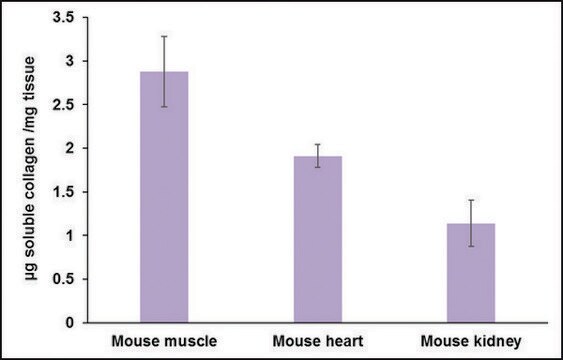Kluczowe dokumenty
MAK357
Hydroxyproline Assay Kit (Perchlorate-Free)
sufficient for 100 colorimetric tests
About This Item
Polecane produkty
zastosowanie
sufficient for 100 colorimetric tests
metoda wykrywania
colorimetric
powiązane choroby
rheumatological diseases; cancer; neurological disorders; cardiovascular diseases
temp. przechowywania
−20°C
Opis ogólny
Cechy i korzyści
Przydatność
Zasada
zastąpiony przez
Hasło ostrzegawcze
Danger
Zwroty wskazujące rodzaj zagrożenia
Zwroty wskazujące środki ostrożności
Klasyfikacja zagrożeń
Aquatic Chronic 3 - Eye Dam. 1 - Met. Corr. 1 - Resp. Sens. 1 - Skin Corr. 1A - Skin Sens. 1 - STOT SE 3
Organy docelowe
Central nervous system
Kod klasy składowania
8A - Combustible corrosive hazardous materials
Temperatura zapłonu (°F)
188.6 °F
Temperatura zapłonu (°C)
87 °C
Wybierz jedną z najnowszych wersji:
Certyfikaty analizy (CoA)
Nie widzisz odpowiedniej wersji?
Jeśli potrzebujesz konkretnej wersji, możesz wyszukać konkretny certyfikat według numeru partii lub serii.
Masz już ten produkt?
Dokumenty związane z niedawno zakupionymi produktami zostały zamieszczone w Bibliotece dokumentów.
Nasz zespół naukowców ma doświadczenie we wszystkich obszarach badań, w tym w naukach przyrodniczych, materiałoznawstwie, syntezie chemicznej, chromatografii, analityce i wielu innych dziedzinach.
Skontaktuj się z zespołem ds. pomocy technicznej




